

Levers
For your arm, leg or any body part to move, the appropriate muscles and bones must work together as a series of levers. A lever comprises three components -
- Fulcrum or pivot - the point about which the lever rotates.
- Load - the force applied by the lever system.
- Effort - the force applied by the user of the lever system.
How a lever will operate is dependent on the type of lever.
Classification of Levers
- Class 1 - The fulcrum lies between the effort and the load.
- Class 2 - The fulcrum is at one end, the effort at the other end, and the load lies between the effort and the fulcrum.
- Class 3 - The fulcrum is at one end, the load at the other end and the effort lies between the load and the fulcrum.
 Class 1 Lever |
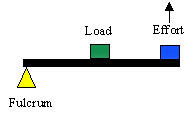 Class 2 Lever |
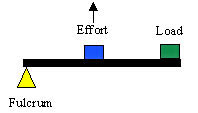 Class 3 Lever |
Class 3 is the most common lever in the human body.
Examples of strength training
Davis et al. (2000)[1] provide the following examples of levers in the human body:
- Class 1 - Seated dumbbell triceps extension.
- Class 2 - Standing heel lift.
- Class 3 - Seated biceps curl.
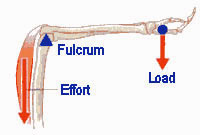 Class 1 Lever in the Body |
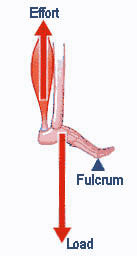 Class 2 Lever in the Body |
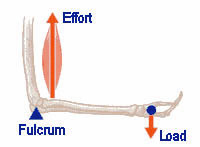 Class 3 Lever in the Body |
References
- DAVIS, B. et al. (2000) Physical Education and the Study of Sport. London: Harcourt Publishers. p. 237-238
Page Reference
If you quote information from this page in your work, then the reference for this page is:
- MACKENZIE, B. (2003) Levers [WWW] Available from: https://www.brianmac.co.uk/levers.htm [Accessed